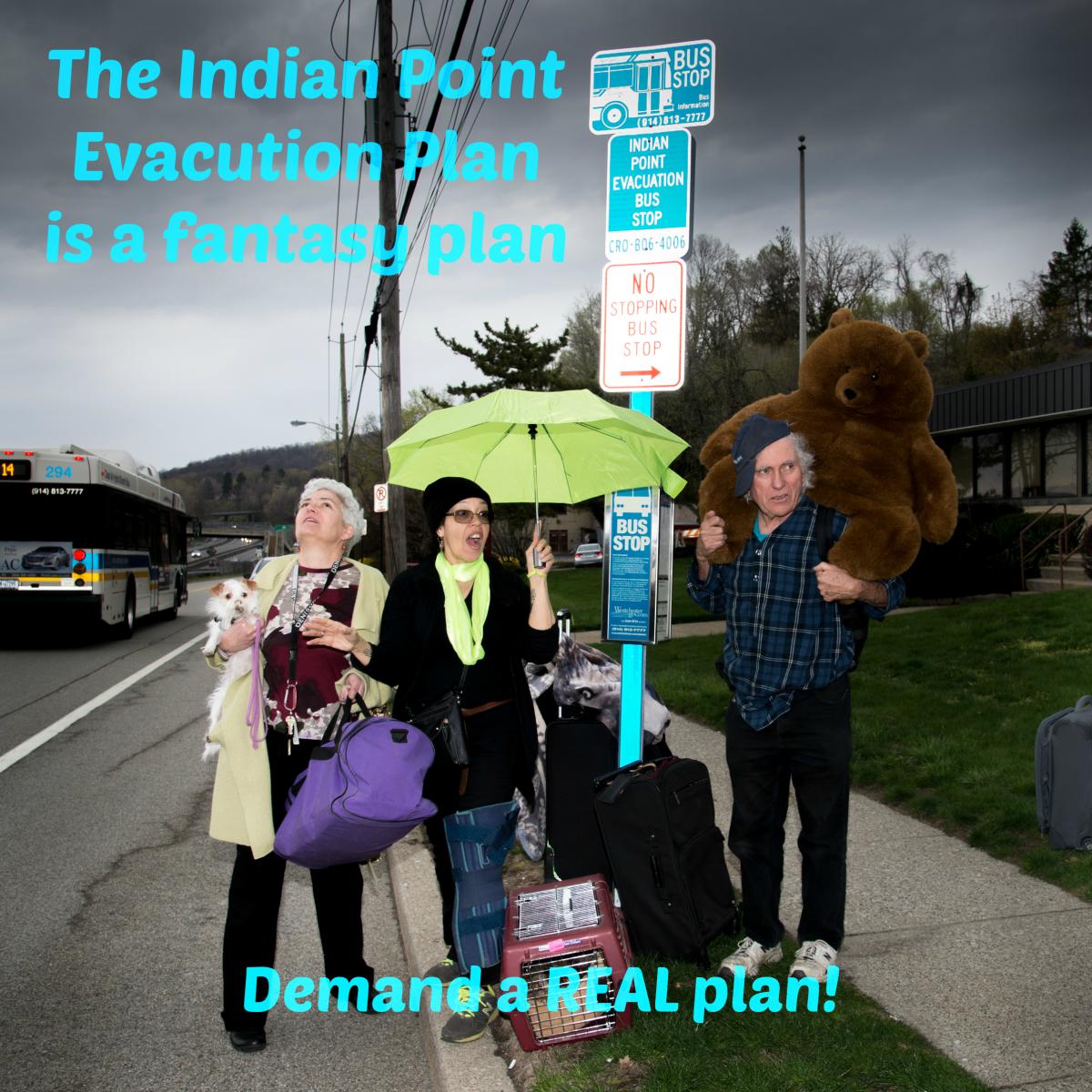Programm of the International Uranium Film Festival Berlin 2015, September 24 to 30
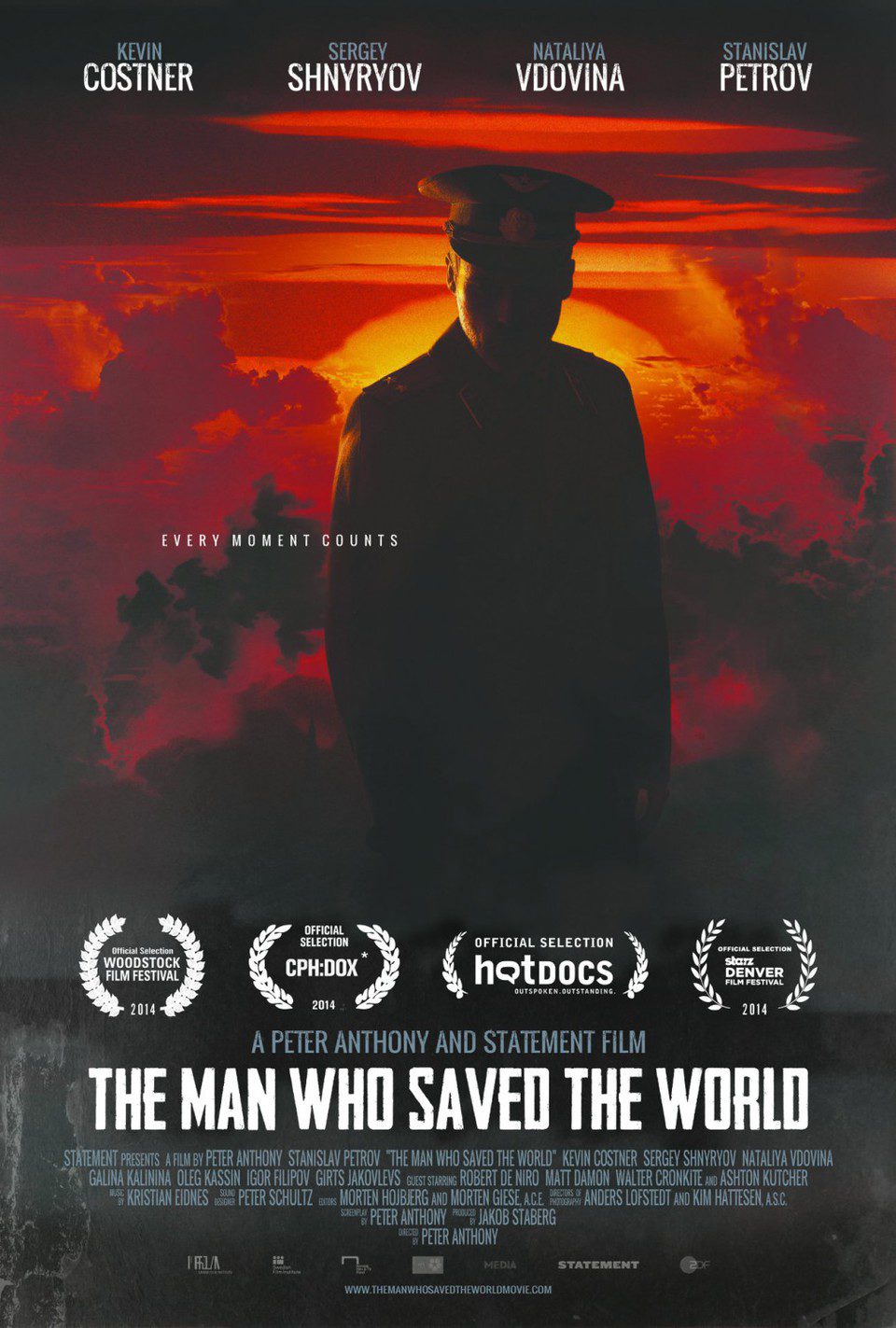
Location: KINO BROTFABRIK, Caligariplatz 1, Phone: 030 4714001/2, E-Mail: karten@brotfabrik-berlin.de
Thursday 24 September
19.00 Uhr - Opening with Klaus Mindrup (MdB), Uwe Bünker and Professor Manfred Mohr (ICBUW)
Opening Film:
THE MAN WHO SAVED THE WORLD (Der Mann, der die Welt rettete), Denmark, 2014, Doc-Fiction with Kevin Costner, Robert De Niro, Matt Damon, Stanislav Petrov, Sergey Shnyryov, u.a.: Director: Peter Anthony, Production: Jakob Staberg, Statement Film, Co-production: WG Film, 105 Min. Russian, English.
“Few people know of Stanislav Petrov... yet hundreds of millions of people are alive because of him.” 1983. The Cold War is seconds from exploding. The world holds its breath as the superpowers USA and Russia are arming themselves against each other with thousands of nuclear missiles. On the 26th of September, Russian radars intercept five nuclear missiles on their way to Russia. Stanislav Petrov is commander-in-chief. The decision that would start World War III rests on his shoulders. Should Russia fire nuclear missiles at the United States in defence? 'The Man Who Saved the World' is an epic Cold War thriller that sends shivers down your spine, while also being a gripping story about the man who actually saved the world, and his struggle to get his life back on track before it is too late.
“I often get the chance to play a hero. But Stanislav is a true real-life hero.” Kevin Costner
Kevin Costner’s appearance in The Man Who Saved the World closed a circle that he himself had instigated. While researching for his role in the 1987 film No Way Out, he came across Petrov’s story on an episode of NBC’s Dateline. This was around the time he was shooting Thirteen Days, a film based on the Cuban missile crisis, which brought the U.S. to the brink of war in an earlier doomsday scenario. Costner was so amazed to be hearing for the first time about someone whose actions likely prevented World War III, he felt compelled to write to Petrov and thank him for his actions. When filmmakers reached out to Costner about meeting with Petrov, the award-winning director was eager to meet, in his words, “the man who saved the world.” During the meeting, Costner was able to express his gratitude to Petrov for his brave decision made at a critical time in the world’s history. www.themanwhosavedtheworldmovie.com
Friday 25.09.2015
16.00 Uhr - Cold War and Atomic Bombs
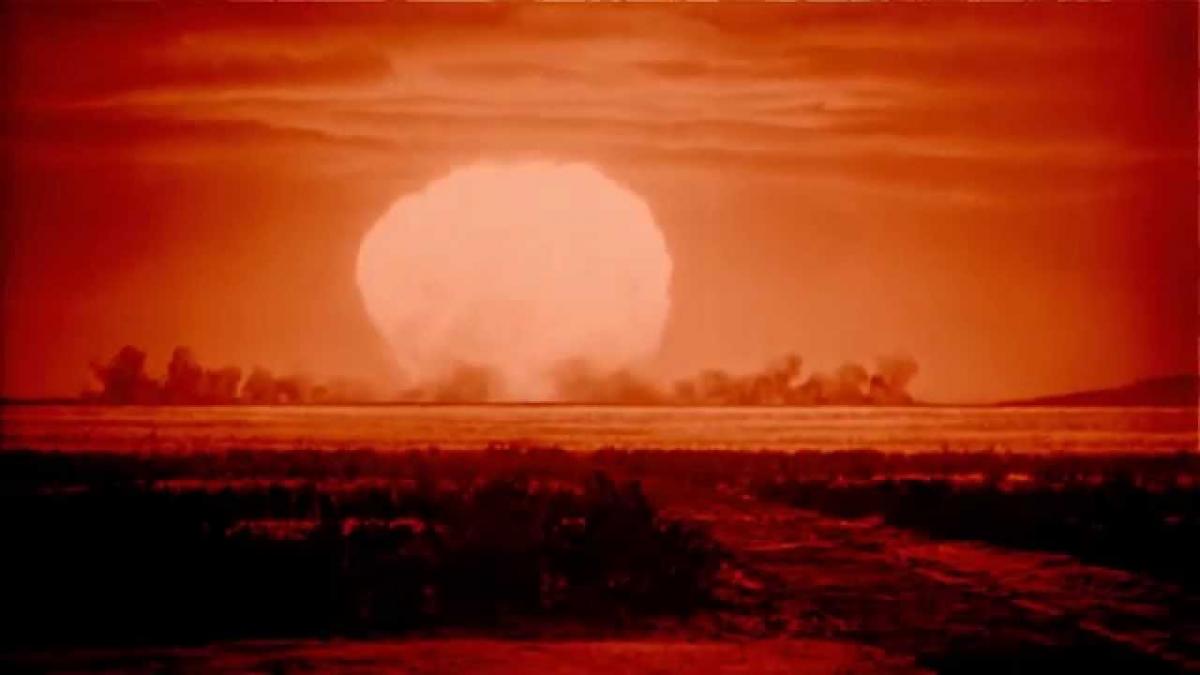 PEQUENO OBJETO A (SMALL OBJECT) Brazil | 2014 | 16’ | Video Art. Director: Daniel Abib | Producer: Daniel Abib. Original Language: Portuguese with English/German subtitles: A short film about a girl, a scientist and a nuclear bomb. Shiro Ishio builds the bomb of the apocalypse and now seeks to understand its impact. "Small Object" is about science and its limits. The film is a Student production of the State University Fluminense of Rio de Janeiro (UFF). https://www.facebook.com/pequenoobjetoa
PEQUENO OBJETO A (SMALL OBJECT) Brazil | 2014 | 16’ | Video Art. Director: Daniel Abib | Producer: Daniel Abib. Original Language: Portuguese with English/German subtitles: A short film about a girl, a scientist and a nuclear bomb. Shiro Ishio builds the bomb of the apocalypse and now seeks to understand its impact. "Small Object" is about science and its limits. The film is a Student production of the State University Fluminense of Rio de Janeiro (UFF). https://www.facebook.com/pequenoobjetoa
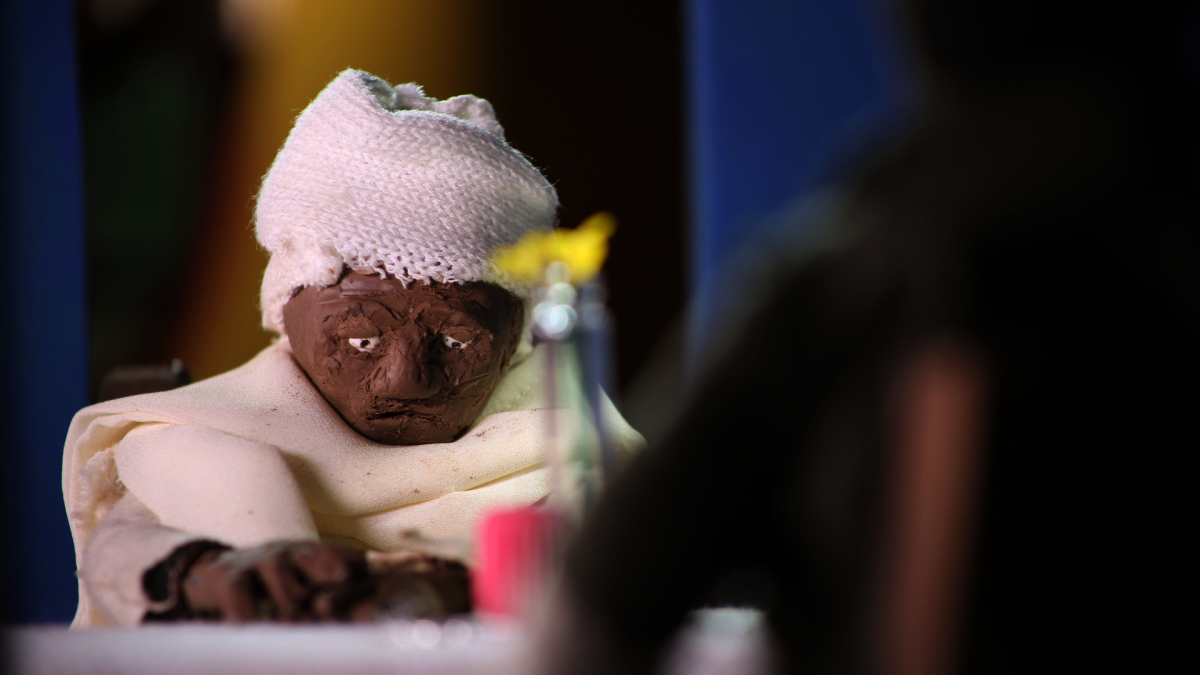
AMALIA, USA, 2014, Animation, 14 min, Spanish and English. Director: David Harrison. Producer: Emlyn Hughes, K1 Animation Lab, Center for Nuclear Studies at Columbia University. www.k1project.org/home/
On Black Saturday, 1962, a Cuban woman stuck in purgatory, Amalia, is forced to confront her past when guests arrive claiming that Cuba has been destroyed. Background is the The Cuban nuclear missile crisis of October 1962. The crisis peaked on Oct. 27, the Black Saturday, when a series of startling events, including the shooting down of an American U-2 spy plane over Cuba, suggested that neither Khrushchev nor Kennedy fully controlled their own military machines. Historian Arthur M. Schlesinger Jr. described it as the “most dangerous moment in human history.”
David Harrison is currently a fourth year Theatre Major at New York University and has been studying in film school and directing films since he was sixteen. David is interested in using narrative films to address human rights issues like nuclear weapons and nuclear terrorism. He is thrilled to be a part of K1 Project. "Though recent years have witnessed a revitalization of scholarly and public interest in the topic of nuclear technologies, there has not been a corresponding increase in the extent of involvement by scientists in the pursuit of needed policy and the education of the public. The K1 Project, Center for Nuclear Studies at Columbia University, seeks to rectify this situation by providing opportunities to prepare future scientist and scholars to become leaders and experts on the topic of nuclear technologies." http://www.k1project.org/home/
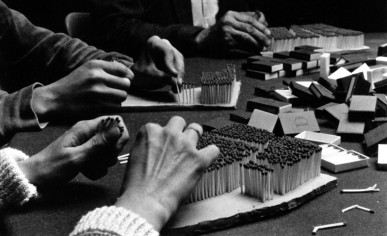
ENOLA, Germany, 1986, 28', direction Christoph Boekel, production Baum-Film and Cristoph Boekel. Experimental, German, English subtitles.
An experimental film which tries to reflect upon the danger of inconceivability, using Hiroshima as a basis. This film does not resort to the use of the normally shown horrific scenes. Enola is an attempt to induce a process of learning, using unusual film methods.
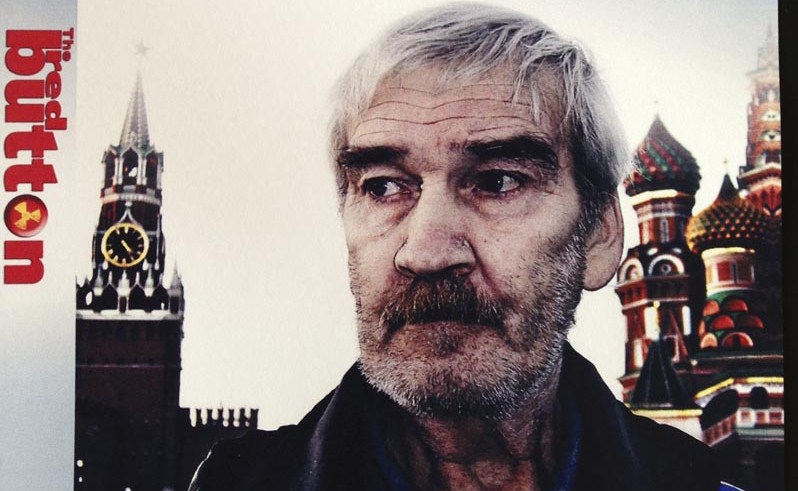 THE RED BUTTON (CZERWONY GUZIK) - Poland/USA, 2011, 52 min, Direction Ewa Pieta, Miroslaw Grubek, Documentary, Russian, English subtitles. The Red Button tells the dramatic story of Stanislav Petrov, the Russian officer who, in 1983, saved the world from atomic war. On September 26, 1983, Stanislaw Petrov was in charge of monitoring American missiles that could potentially be sent to Russia to start a nuclear war. Shortly after midnight, Petrov noticed a missile on his screen. Several minutes later, things became much more serious: four more missiles appeared and a flashing red warning sign began asking him to confirm an incoming attack. Petrov knew he only had about fifteen minutes to decide what he would do before the missiles would reach the Soviet Union. The future of the world was in the 44-year-old Russian officer’s hands as he wrestled with the decision of whether or not to use Russia’s atomic button. www.logtv.com/films/redbutton/
THE RED BUTTON (CZERWONY GUZIK) - Poland/USA, 2011, 52 min, Direction Ewa Pieta, Miroslaw Grubek, Documentary, Russian, English subtitles. The Red Button tells the dramatic story of Stanislav Petrov, the Russian officer who, in 1983, saved the world from atomic war. On September 26, 1983, Stanislaw Petrov was in charge of monitoring American missiles that could potentially be sent to Russia to start a nuclear war. Shortly after midnight, Petrov noticed a missile on his screen. Several minutes later, things became much more serious: four more missiles appeared and a flashing red warning sign began asking him to confirm an incoming attack. Petrov knew he only had about fifteen minutes to decide what he would do before the missiles would reach the Soviet Union. The future of the world was in the 44-year-old Russian officer’s hands as he wrestled with the decision of whether or not to use Russia’s atomic button. www.logtv.com/films/redbutton/
18.00 Uhr - Lost Atomic Bombs
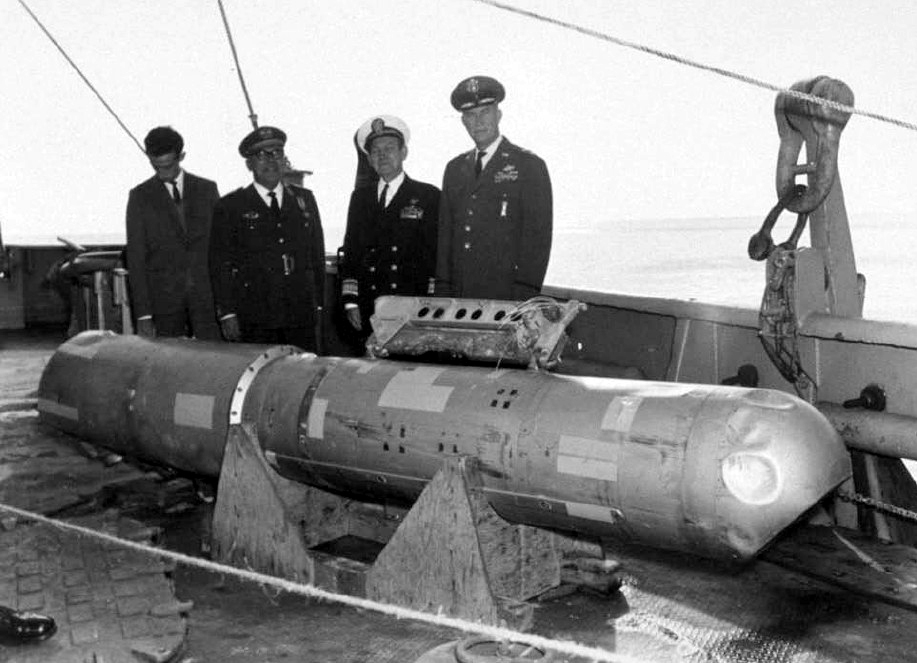
Broken Arrow. Nuclear Accident in Palomares (Operación Flecha Rota. Accidente Nuclear en Palomares)
Spain, 2007, 96 min, Documentary, Director Jose Herrera Plaza, Production: Antonio Sánchez Picón. Spanish/English with German subtitles.
Cold War. In January 1966 two American airplanes collided over Palomares (Almería-Spain) and as a consequence, four H-bombs fell to hearth. Two of them explode their conventional charge and due to the strong wind radioactive material is scattered over the region. An intensive search is started to find the fourth bomb. At the same time decontamination process of the zone is starting and the residual contamination of persons and environment begins to be checked and also the “Project Indalo”, still running 48 years later. The narration is strictly told by experts and protagonists. It is complemented with Dokumentarfilm and audiovisual material unpublished in its greater part, declassified in the last years.
Director's statement: "Next January marks the 50th anniversary of the nuclear accident in Palomares (Almeria, Spain). For half a century, 1500 human beings have lived misled surrounded by several kgs of plutonium scattered by wind and rain in the Mediterranean and around. This is the story of a lie born during the Cold War, the Franco dictatorship and the genesis of the nuclear industry in Spain. A still alive, open story, in demand for a final solution. " Jose Herrera Plaza
20.00 Uhr - Nuclear Power and Uranium Mining
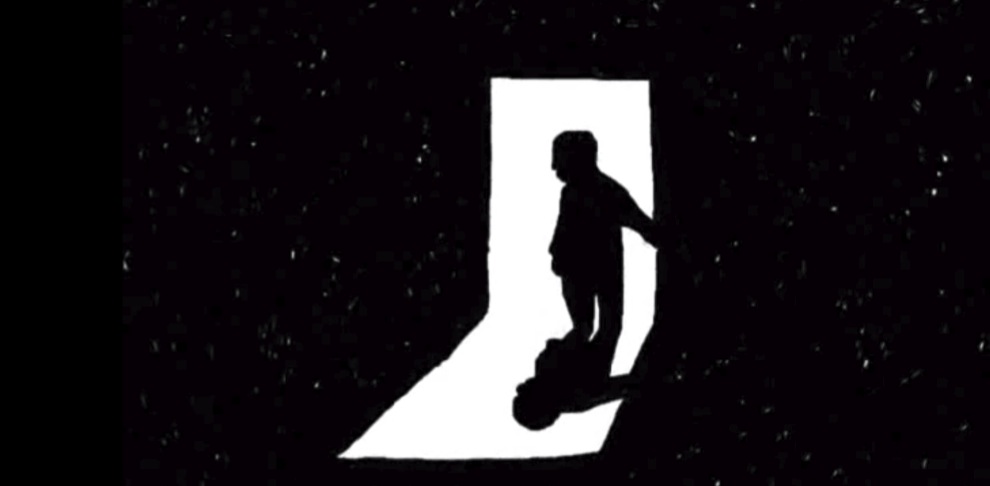
Darkroom, Germany | 2011 | 2 min | Animation. Director: Anna Luisa Schmid | Producer: Anna Luisa Schmid. No Dialogue. www.vimeo.com/81749731
An answer to the nuclear-power-campaign in Germany 2011. We are watching a man on his morning routine who doesn’t know what he affects at the other side of the planet.
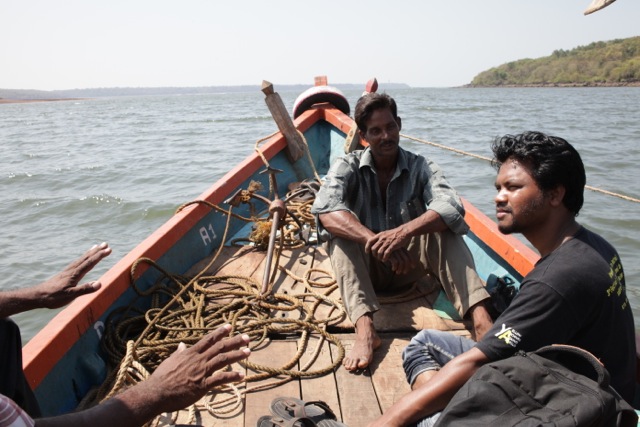
NUCLEAR LIES - Austria/India | 2015 | 72 minutes | Documentary, Director: Praved Krishnapilla / Producer: Neongreen Network/Renate Brandner-Weiss/W4EST, Original Language: German/English (Hindi/Marathi/Konkani/Tamil). www.nuclearlies.net
"Nuclear Lies" takes the spectators on a journey to different locations of the nuclear industry in India - that begins at the highly radioactive uranium mines in Jadugoda in the east of the country, to the ill-fated families of problem stricken reactors of Tarapur and Kalpakkam, through fishing villages of Jaitapur where the world ́s largest nuclear plant is proposed to be built and to the protesters around the largest standing nuclear plant in Koodankulam at the southern tip of India. He points to the terrible injustices and the lies and propaganda of the government to promote nuclear energy in India.The film rather focuses on the voices and perspectives of those affected and their personal struggle for survival.
Saturday 26.09.2015
16.00 Uhr - Chernobyl: Documentary
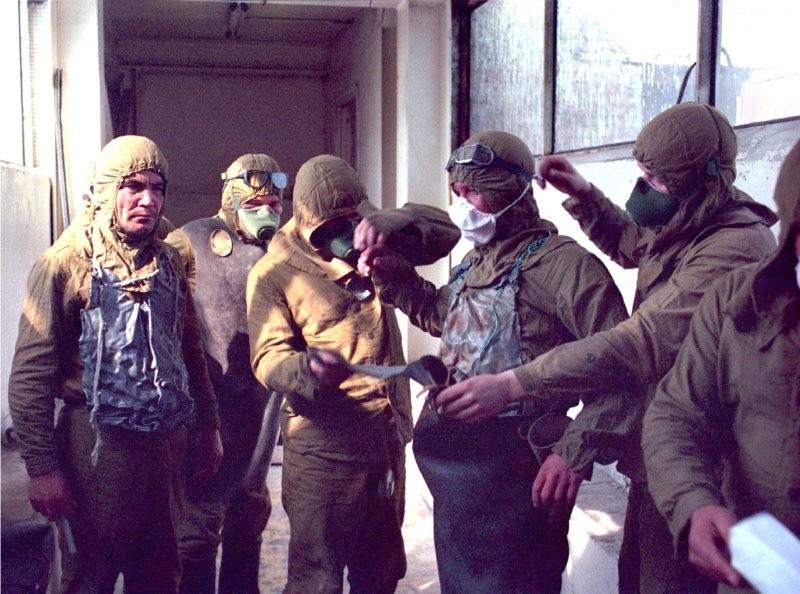 THE BATTLE OF CHERNOBYL (Die Schlacht von Tschernobyl) France, 2006, 94 min, Documentary, Director: Thomas Johnson, Production: Hind Saïh, English. http://www.mwayfilms.com/en/films/the-battle-of-chernobyl
THE BATTLE OF CHERNOBYL (Die Schlacht von Tschernobyl) France, 2006, 94 min, Documentary, Director: Thomas Johnson, Production: Hind Saïh, English. http://www.mwayfilms.com/en/films/the-battle-of-chernobyl
On April 26, 1986, a 1,000 feet high flame rises into the sky of the Ukraine. The fourth reactor of the Chernobyl nuclear power plant just exploded. A battle begins in which 500,000 men are engaged throughout the Soviet Union to "liquidate" the radioactivity, build the "sarcophagus" of the damaged reactor and save the world from a second explosion that would have destroyed half of Europe.
Become a reference film, this Dokumentarfilm combines testimonials and unseen footage, tells for the first time the Battle of Chernobyl: More than 200 people died or were seriously injured by radiation exposure immediately after the explosion. 161,000 people had to be evacuated from a 30 kilometer radius of the reactor and 25,000 square km of land were contaminated. As time went on millions of people suffered radiation related health problems such as leukemia and thyroid cancer and around 4,000 people have died as a result of the long-term effects of the accident. Nobody was prepared for such a crisis. 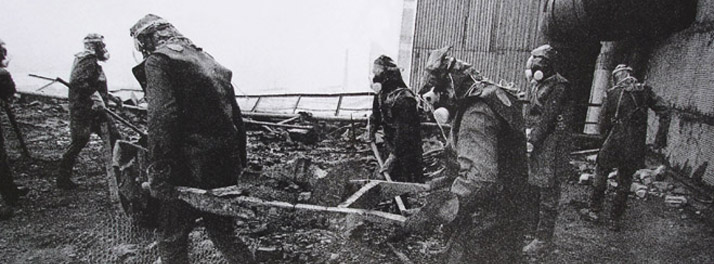 For the next seven months, 500,000 men will wage hand-to-hand combat with an invisible enemy – a ruthless battle that has gone unsung, which claimed thousands of unnamed and now almost forgotten heroes. Yet, it is thanks to these men that the worst was avoided. AWARDS: The "Battle of Chernobyl" won several international Awards!
For the next seven months, 500,000 men will wage hand-to-hand combat with an invisible enemy – a ruthless battle that has gone unsung, which claimed thousands of unnamed and now almost forgotten heroes. Yet, it is thanks to these men that the worst was avoided. AWARDS: The "Battle of Chernobyl" won several international Awards!
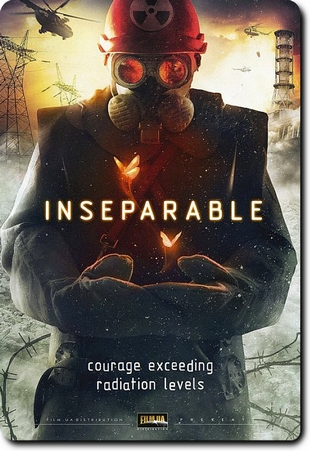 18.00 Uhr - Chernobyl: Fiction
18.00 Uhr - Chernobyl: Fiction
INSEPARABLE (Unzertrennlich), Ukraine, 2013, Fiction, 118 Min, Director: Vitaliy Vorobyov, Production: Victor Mirsky. Russian with English/German subtitles. Filminfo: www.film.ua/en/news/1056
April, 1986. Pripyat, Ukraine. A core meltdown occurred at Reactor 4 of the Chernobyl Power Plant. Over thirty people died during the blast but the estimated death toll as a result of the radiation fallout will reach a four-digit number. This accident will be considered the world’s largest ecological disaster. Set at ground zero of a catastrophe, this film will reveal the details of the Chernobyl event. The shocking news of the explosion at the nuclear plant has spread, as the world watched the tragedy in fear and confusion. Hearts went out to those who displayed selfless courage and integrity in the initial efforts to stabilize the reactor power. But some were too busy being in love to notice what had just happened in nearby Chernobyl. The disaster has faded into the background... This is an account of love and loss, bravery and supernatural stoicism in the face of unbeatable odds. Film Info: http://film.ua/en/production/filmsandseries/projects/241
Awards: Best TV film/series, Teletriumph 2013 / VFX in a TV Episode, FICCI BAF Awards 2014 / Platinum Remi Award, WorldFest Houston 2014 / Silver Plaque, Chicago International Film Festival Television Awards 2014 / Yellow Oscar Award 2015, International Uranium Film Festival
20.00 Uhr - Nuclear Power in India
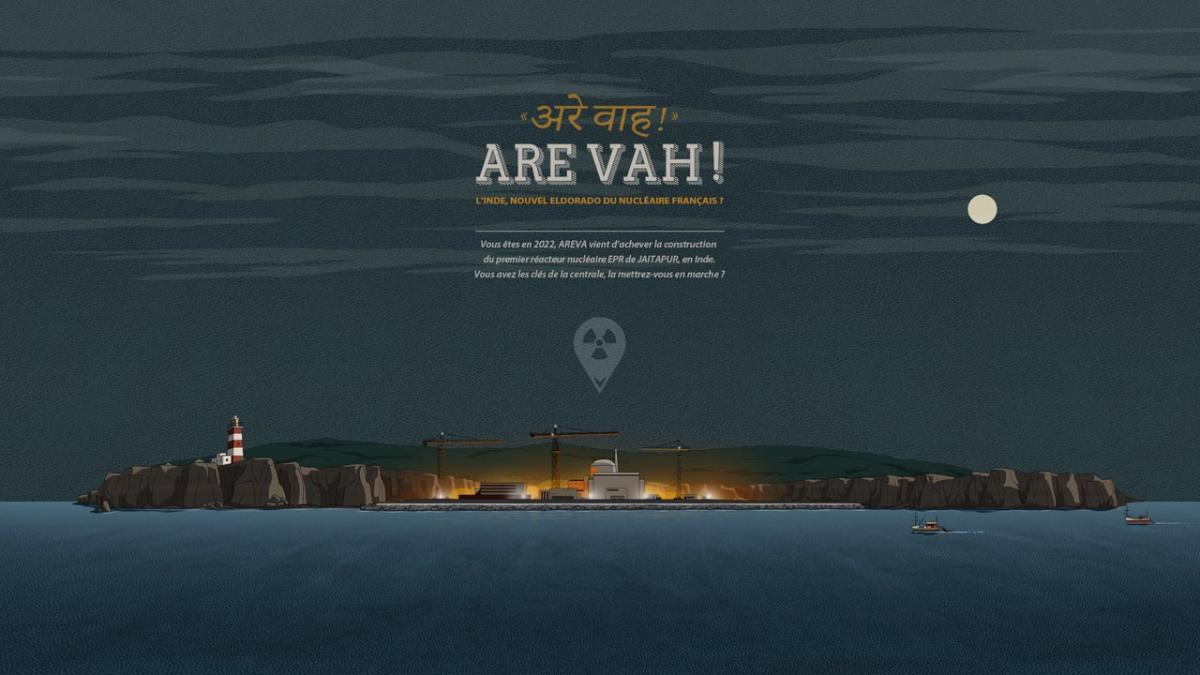 ARE VAH! France | 2014 | 71’| Documentary. Director: Micha Patault and Sarah Irion | Producer: Antoine Cayrol. Original Language: Hindi, English, French | Subtitled Language: English. Trailer: https://vimeo.com/96933862
ARE VAH! France | 2014 | 71’| Documentary. Director: Micha Patault and Sarah Irion | Producer: Antoine Cayrol. Original Language: Hindi, English, French | Subtitled Language: English. Trailer: https://vimeo.com/96933862
Synopsis: In India, Jaitapur, a seismic zone by the seaside. Areva plans to build six EPR reactors, making it the largest nuclear power plant in the world. A project the population is hostile to. But India opened up to the civil nuclear market. Is India ready for the nuclear rebirth? Flim Blog: http://www.arevah-blog.com/auteurs-contact/
Awards: Innsbruck Natur Film Festival 2014, Grand Prize of the City of Innsbruck, 3rd place. Jury Statement: "Let there be light! - at least if French nuclear corporations had their way. Ignoring the needs and opinions of the local Indian population, multi-national nuclear interests are to prevail. The film describes this perfidious conflict of interest in a masterful way and leaves the audience shocked!"
Sunday, 27.09.2015
16.00 Uhr - Film & Round Table: Modern wars and environmental contamination. Discussion with the film directors.
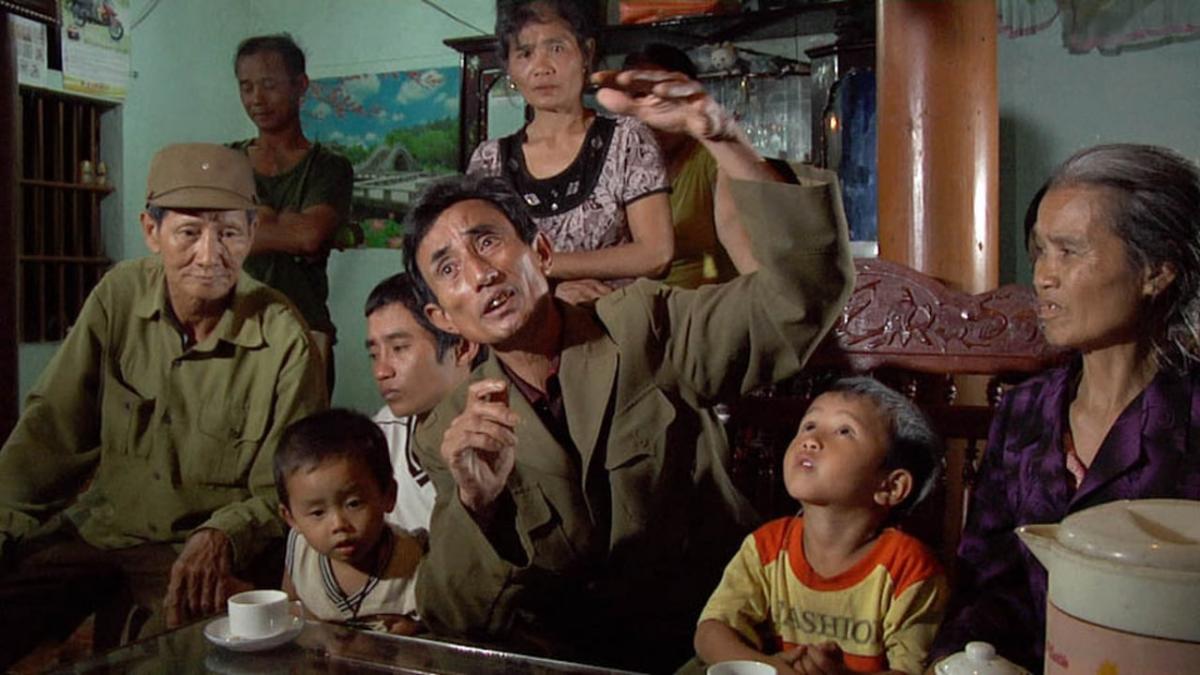 LIGHTER THAN ORANGE, Germany, 2014, 72 min, Director and Production: Matthias Leupold, Dokumentary, VietnamesE/English with German subtitles. Trailer: www.lighterthanorange.com
LIGHTER THAN ORANGE, Germany, 2014, 72 min, Director and Production: Matthias Leupold, Dokumentary, VietnamesE/English with German subtitles. Trailer: www.lighterthanorange.com
The documentary reveals a political failure through individual biographies. It depicts the fates of a few of the 3 million Vietnamese veterans who have been victims of Agent Orange. Due to exposure to dioxin-based herbicide Agent Orange used during the Vietnam War, veterans brought home a change in their DNA. This change having been passed down through the generations, their children are still suffering from incurable illnesses and debilitating deformity today.
“Lighter than Orange” intends to document the stories of those who experienced the most brutal aspects of the Cold War with intimacy and humanity. The featured veterans and their families still suffer from the effects of a war that ended a half a century ago. This film hopes to inspire an international effort to address the enor- mous environmental damage and personal injury the Vietnam War caused. To take a step in the direction of reconciliation and reparations, all of the film’s revenue will go directly to supporting two of the families featured in it.
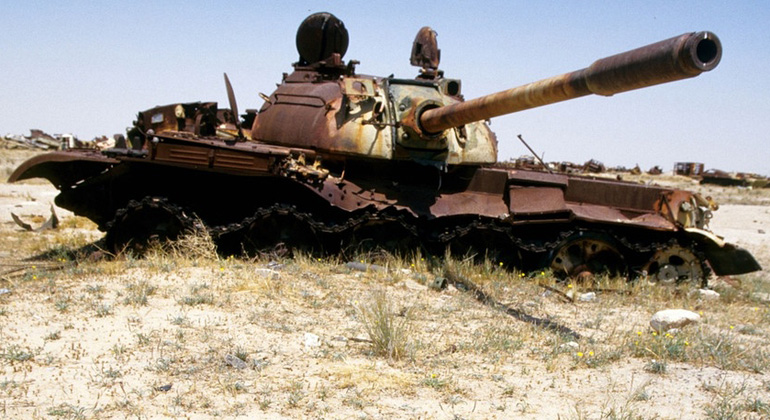 LEISER TOD IM GARTEN EDEN - DIE FOLGEN DER GOLFKRIEGE (Quiet Death in the Garden of Eden), Germany, 2015, 45 min, Documentary, Direction Karin Leukefeld and Markus Matzel, Production: Bayerischer Rundfunk. www.leukefeld.net
LEISER TOD IM GARTEN EDEN - DIE FOLGEN DER GOLFKRIEGE (Quiet Death in the Garden of Eden), Germany, 2015, 45 min, Documentary, Direction Karin Leukefeld and Markus Matzel, Production: Bayerischer Rundfunk. www.leukefeld.net
Using the example of Iraq the film exposes the consequences of using uranium munitions. According to the United Nations Environmental Program (UNEP) estimations, up to 2,000 tons of depleted uranium munitions had been fired on Iraq during the 1991 and 2003 wars. Vast areas, particularly in the south of the country are today contaminated. The BR documentary film describes the dramatic "increase in the number of cases of cancer, stillbirths and horrible congenital deformities" in those areas of Southern Iraq. Scholarly studies trace the causes to radiation from debris caused by depleted uranium munitions, whose acquisition is now being demanded by German military policymakers.
Round Table in the Red hall: Event together with IALANA & ICBUW Germany (www.uranmunition.org). Round table members: Matthias Leupold, Karin Leukefeld, Markus Matzel and Birgit Mahlzahn (ICBUW), Heiner Bücker (Coop Anti-Kriegs Cafe / http://coopcafeberlin.de)
20.00 Uhr - Modern wars and uranium weapons
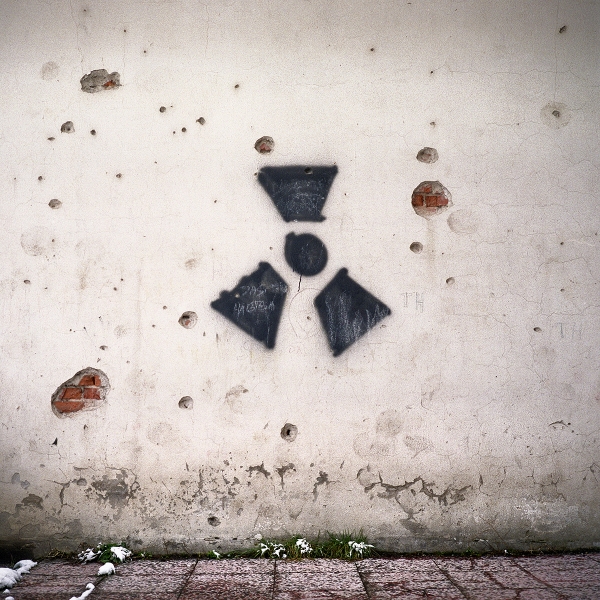
FRIENDLY FIRE - BACK TO THE BALKANS, Italy, 2010, 10 min, Direction and Production: Terra Project Photographers, Michele Borzoni, Simone Donati, Pietro Paolini, Rocco Rorandelli, Italian with English subtitles. Trailer: https://vimeo.com/11983587
Between 1995 and 1999, military forces of NATO were deployed to re-establish the order in the independent provinces of ex-Jugoslavia. During the conflict the US army utilized weapons enriched with depleted uranium. The italian soldiers, uninformed and unprotected, were exposed to those contaminations and many of them developed with time the so called Balkan syndrome, a series of tumors, the Hodgkin lymphoma being the most common of them. As today at least 250 soldiers are dead and about 2500 are suffering from such syndrome.Ten years after the conflict, some areas and industrial zones theatre of the bombings have not yet been reclaimed from depleted uranium waste and are a testimony, as invisible monuments, of what the tragic effects of such conflicts can be. Info: http://www.terraproject.net/en/collective-works/friendly-fire-balkans
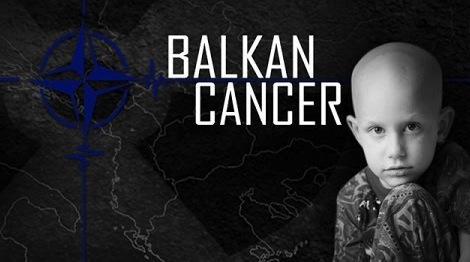 BALKAN CANCER, Macedonia | 2014 | 52’ | Documentary. Director: Agim Abdullah | Producer: Press TV. Original Language: Macedonian | Subtitle Language English. Trailer: www.youtube.com/watch?v=0L6mGh-u76A
BALKAN CANCER, Macedonia | 2014 | 52’ | Documentary. Director: Agim Abdullah | Producer: Press TV. Original Language: Macedonian | Subtitle Language English. Trailer: www.youtube.com/watch?v=0L6mGh-u76A
Though ended almost 15 years ago, the Balkans War is still taking a heavy toll, killing thousands of people. Different types of cancer triggered by depleted uranium weapons used by the NATO forces then are inflicting this catastrophe. Trailer: https://www.youtube.com/watch?v=UjyhWVqBbQg
Monday 28.09.2015
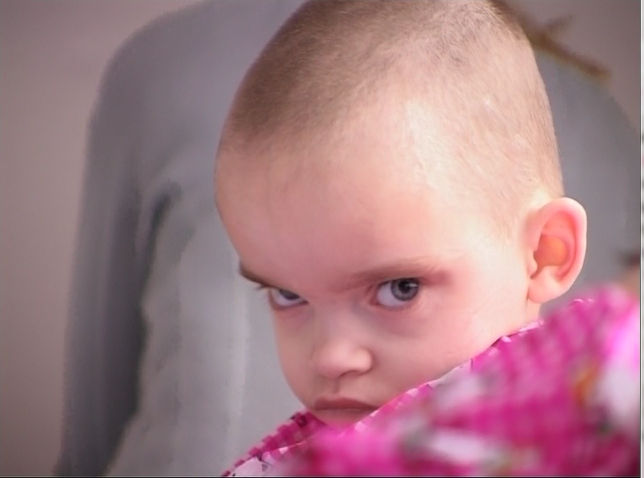
16.00 Uhr - Radioactive Contamination
KAZAKHSTAN - THE FORGOTTEN FALLOUT, Irish | 2008 | 24’| Image Film. Director: Brian Staveley | Producer: Brian Staveley. Original Language: English | Subtitle Language English.
This video features the work of The Greater Chernobyl Cause, an Irish charity working in the former Soviet satellite of Kazakhstan, a vast beautyful country with ahe dangerous nuclear legacy of Atomic Bomb tests. http://greaterchernobylcause.ie/index.php/about_us
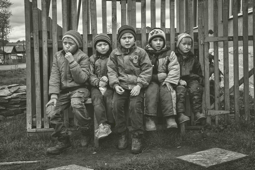
BEHIND THE URALS - THE NIGHTMARE BEFORE CHERNOBYL (Hinter dem Ural - Der Albtraum vor Tschernobyl) Italy, 2015, 62 min,Dokumentary, Director: Alessandro Tesei, Production "Mondo in Cammino Productions", English, Japanese with German Subtitles https://www.youtube.com/watch?v=VOvI_BF-27w
A documentary about the first and the worst ever nuclear incident, hidden and forgotten for decades. Director's statement: "In the late '40, in Chelyabinsk region, former Soviet Union, was builted an atomic complex called Mayak (Lighthouse). Since its first working period, Mayak was guilty of huge radioactive contamination and of three big incidents.
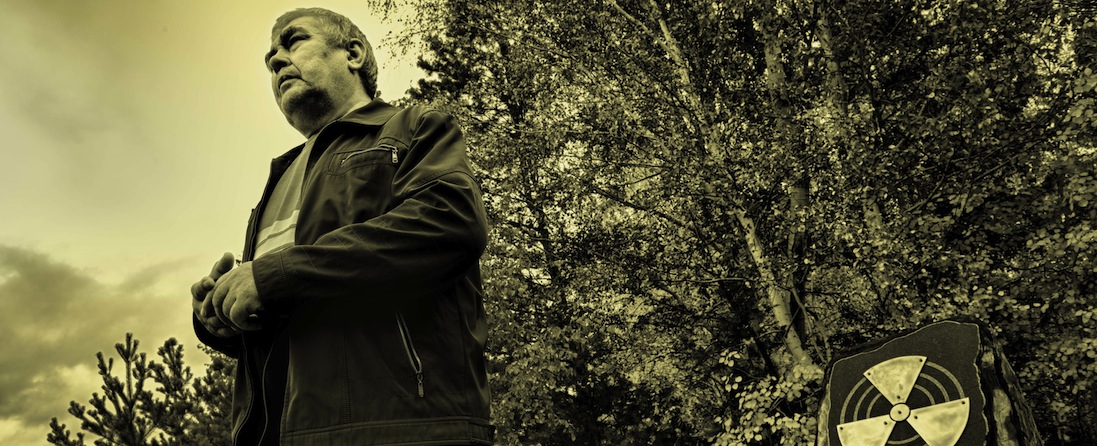
First one was the high level radioactive waste discarged in Techa river from 1949 until 1952, following the big explosion on 1957 (AKA Kysthym 1957 incident) and the radioactive duststorm of 1967 from the lake Karachy. It was at least 20 times Chernobyl, hidden for over 50 years, with people used as guinea pigs. Understanding what happened there is important for know what nuclear is and what could happen in Fukushima. We, as humans, must know this situations." Alessandro Tesei / www.alessandrotesei.com
18.00 Uhr - Fukushima: Documentary
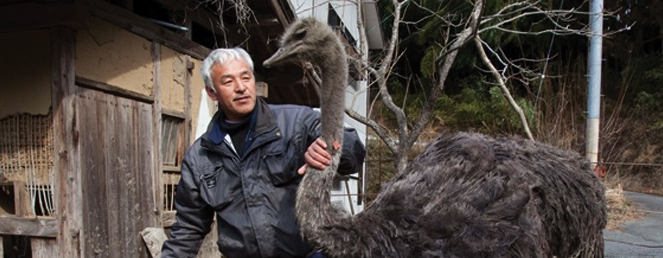
ALONE IN THE ZONE (Allein in der Zone), Japan | 2013 | 18’ | Documentary. Directors: Ivan Kovac and Jeffrey Jousan | Producer: Vice Japan. Original Language: Japanese | Subtitled Language English and German. Trailer: https://www.youtube.com/watch?v=2hnKUNinaug
Synopsis: Two years since the Fukushima Dajichi Nuclear Power Plant went into full meltdown,
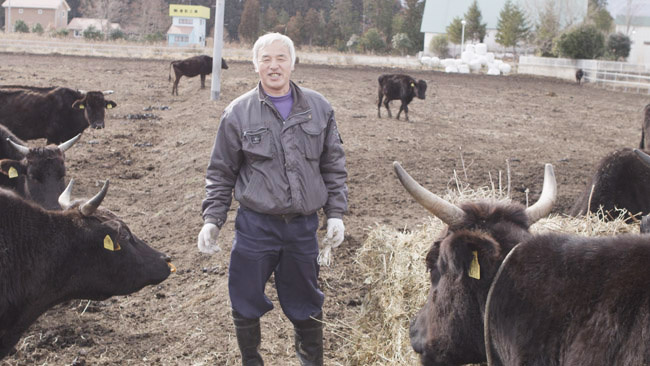
and the resulting 20 km evacuation zone was enforced, one farmer still remains behind braving high levels of radiation and loneliness to tend to abandoned animals.
His name is Naoto Matsumura, and he is the last man standing in the ghost town of Tomioka. Another farmer, Kenji Hasegawa's town of lidate was also evacuated due to high levels of radiation, he sought refuge in temporary housing. Faced with a post-nuclear world both these men share brutally honest views on the state of their lives, TEPCO, government inaction and some of the hardest situations they have had to face in the midst of overwhelming radioactivity. Awards: The Webby Awards 2014 Honoree
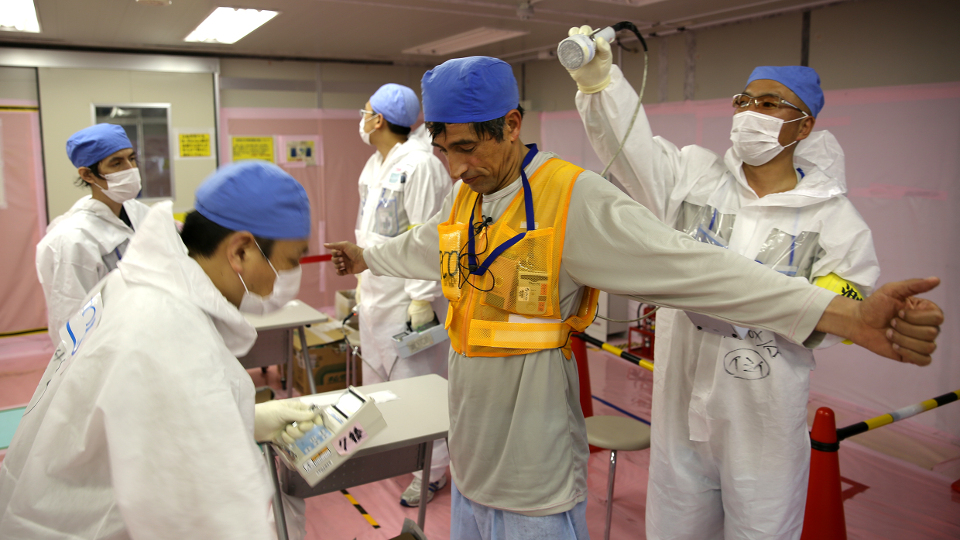
RANGA YOGESHWAR IN FUKUSHIMA - JAPANS KAMPF GEGEN DIE RADIOAKTIVITÄT,
Germany, 2014, 45 min, a Film by Reinhart Brüning, Ranga Yogeshwar, Thomas Hallet, Wolfgang Lemme, Production: WDR / Die Story im Ersten. www.reportage.wdr.de/fukushima
In this documentary a WDR-televison crew and science journalist Ranga Yogeshwar gains access to the area of the atomic plant Fukushima Daiichi and got the opportunity to take samples of radiation and to shoot a film for a couple of hours in this polluted area. Science journalist Ranga Yogeshwar has gained extensive access to Japan's battered Fukushima power plant. He speaks to DW about exploring radiation-contaminated zones, and how the cleanup has progressed so far. http://www.dw.com/en/fukushima-disaster-site-like-a-science-fiction-film...
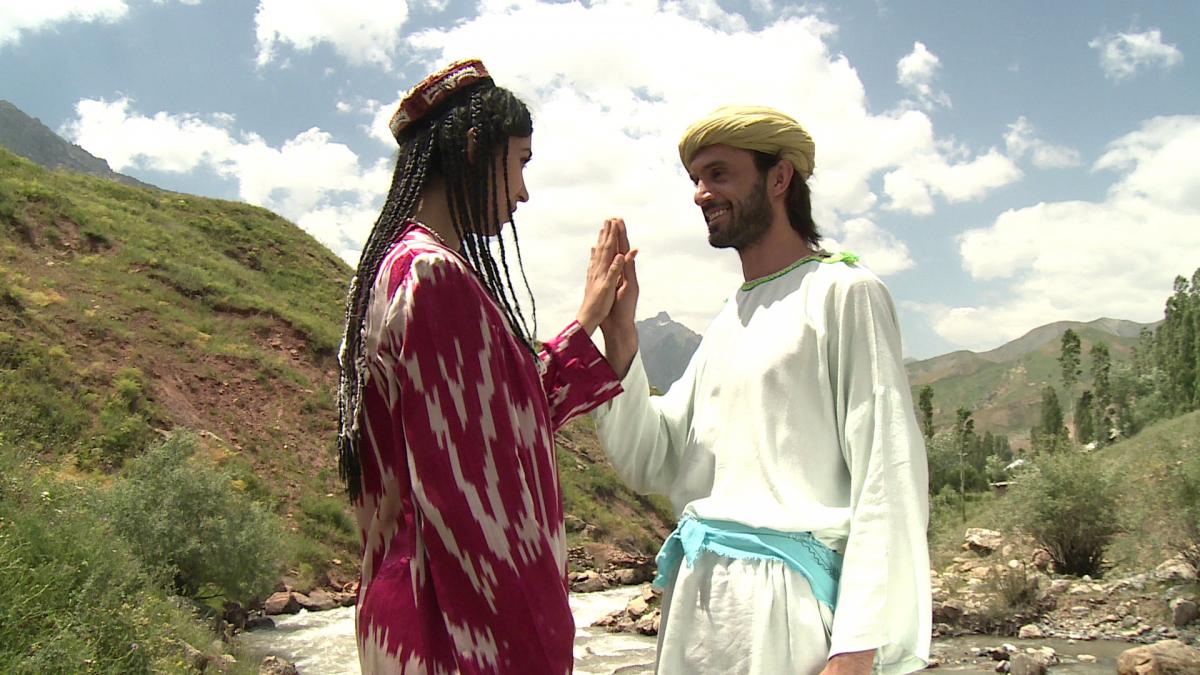 20.00 Uhr - Uranium mining in Tajikistan: Fiction
20.00 Uhr - Uranium mining in Tajikistan: Fiction
TASFIYA, Tajikistan | 2014 | 73’ | Romance, Director: Sharofat Arabova | Producer: Vard Simo, Original Languade Tajik | Subtitles French, English, German, www.facebook.com/tasfiya.film
More than 50 years back in a stony set of a remote mountainous village somewhere in Tajikistan the lovers called Shams and Mekhri used to travel. Mekhri pulled by a transient eclipse breaks an oath of marital faithfulness that overnight transforms Sham’s life into a farcical puppet show, leading to a murder of his spouse. 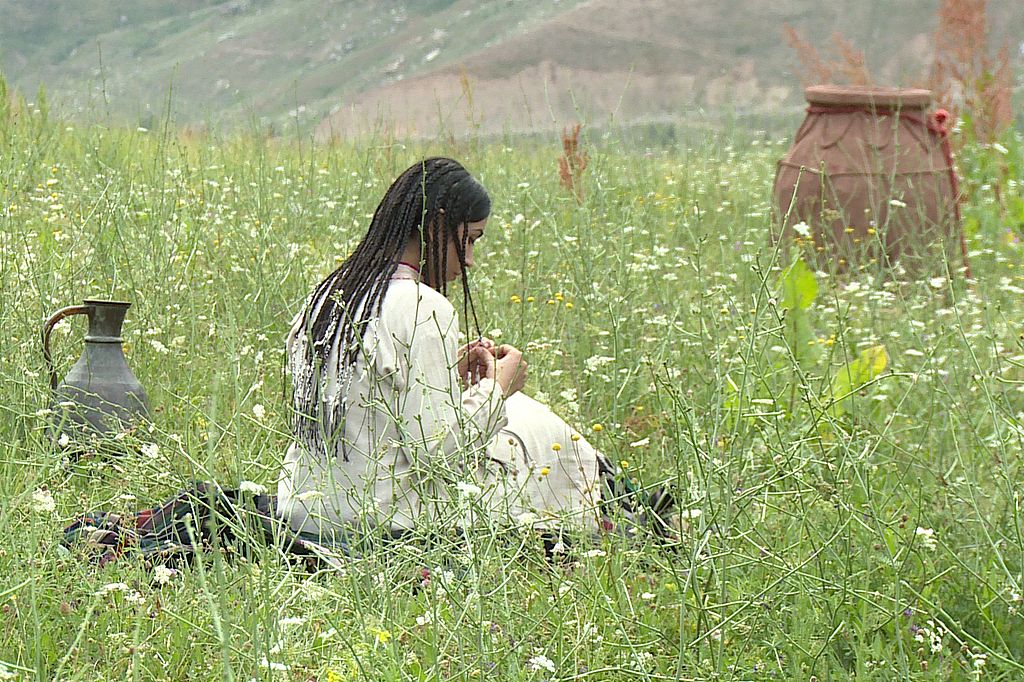 Unable to take the burden of the committed sin, Shams stands on a path of repentance trying to cleanse his fault by serving people. He admits his crime and is sent to the uranium mine next to the abandoned radioactive village. Shams is exiled for 10 years when he gets involved into a making of the first atomic bomb used by USSR. It's a story of repentance set in abstract Tajikistan in Soviet time.
Unable to take the burden of the committed sin, Shams stands on a path of repentance trying to cleanse his fault by serving people. He admits his crime and is sent to the uranium mine next to the abandoned radioactive village. Shams is exiled for 10 years when he gets involved into a making of the first atomic bomb used by USSR. It's a story of repentance set in abstract Tajikistan in Soviet time.
Biography of the director: Sharofat ARABOVA (1985, Uzbekistan) graduated in Cultural Studies in the Department of History and International relations of Russian-Tajik (Slavic) University in Dushanbe, Tajikistan. Due to the lack of opportunity for a film education in Tajikistan she applied for a study abroad and was honored a scholarship of Indian Council for Cultural Relations (ICCR) to study Postgraduate Diploma in Film Direction in Film and Television Institute of India (FTII, Pune) (2007-2013). She was selected for the following international programs as Asian Film Academy 2012 (AFA, Busan), Summer Film Academy of Russian director Nikita Mikhalkov (2013, Moscow) and Berlinale Talents (Berlin, 2014). She also conducts research on cinema and culture and had successfully defended her PhD research thesis on history of Tajik cinema in the Department of History of art of Institute of History, Archaeology and Ethnography of Academy of Sciences of Tajikistan in 2014. Awards: Tajik film experts and critics Award, 6th International Didor Film Festival, 2014
Dienstag 29.09.2015
16.00 Uhr - Nuclear Heritage in Australia and USA
TILL DEATH US DO PART (Bis dass der Tod uns scheidet) Australia, 2014, 5 min, Documentary, Direction & Production: Elektra Macleod, English.
"It is a short experimental film about my ex-husband's contamination at a Uranium Mine and his subsequent death. I will not be silent. I chose to tell this story from my perspective. I hope to raise awareness of the dangers of Uranium Mines and ultimately see them close." Elektra Macleod
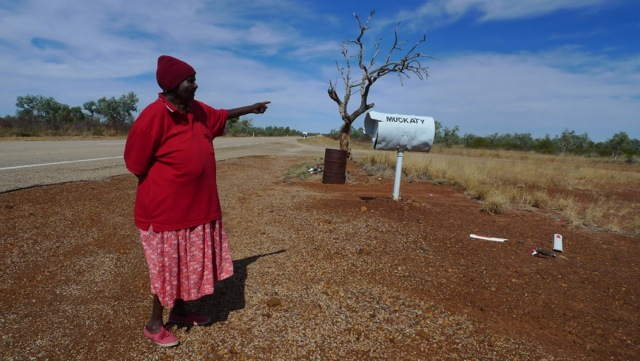
PROTECTING MANUWANGKU, Australia | 2014 | 23’45” | Documentary, Directors: Jason De Santolo and Isaac Parsons | Producer: Fabio Cavadini, Original Language: English
Protecting Manuwangku showcases the strength and determination of the Warlmanpa people in the Central Australian desert, fighting to defend their country and culture from the national nuclear waste dump proposed on their traditional land. The eight-year Muckaty campaign achieved an historic victory in June 2014 when half way through a federal court challenge, the federal government agreed not to further pursue the site. But radioactive waste laws continue to target Aboriginal Land and suspend basic rights. The film provides important lessons and inspiration for the many battles to come.
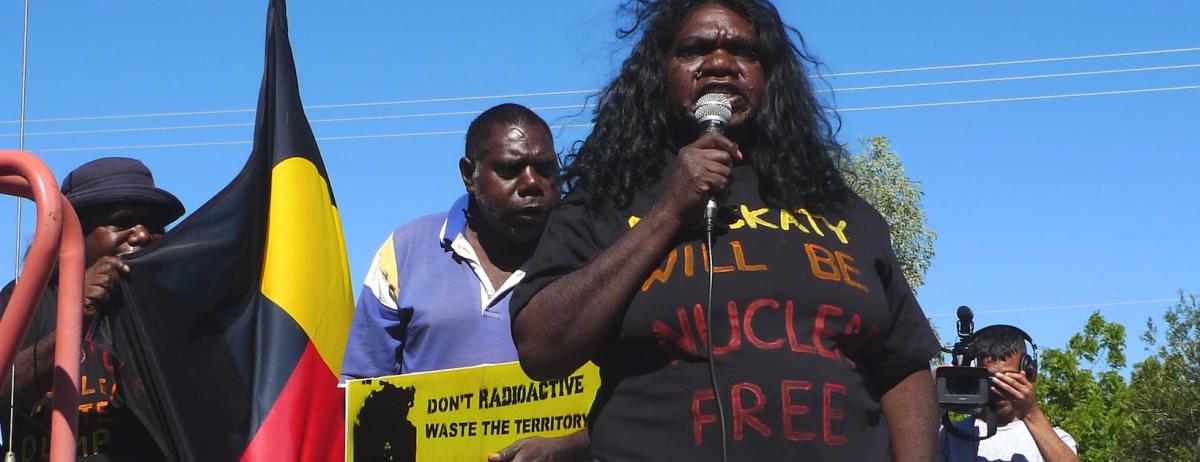 Directors’ Statement: This Jumbunna Research (University of Technology Sydney) documentary project was initiated by invitation and in partnership with Aboriginal Elders and the amazing Beyond Nuclear Initiative campaign team led by film production manager Natalie Wasley. Protecting Manuwangku showcases the strength and determination of Warlmanpa people, fighting to defend their country from a national nuclear waste dump proposed on Aboriginal land at Muckaty in Central Australia. Working with community leaders Dianne Stokes Nampin and Bunny Naburula was so inspirational. Along with other Elders they played critical roles in the eight-year Muckaty campaign, which achieved an historic victory in June 2014. We were also lucky enough to work with seasoned documentary makers Fabio Cavadini and Amanda King of Frontyard Films and were able to share and learn from their decades of experience with cutting edge social activism documentary. After production was complete, National Indigenous Television (NITV) partnered up, and took the distribution to another level with a number of broadcasts as well as a dedicated “Awaken” panel discussion show, which explored nuclear waste and the impact of the nuclear industry on Aboriginal communities at a broader level. Radioactive waste laws in Australia continue to target Aboriginal Land and basic rights. Protecting Manuwangku provides important lessons and inspiration for the many battles to come. Jason DeSantolo and Isaac Parsons
Directors’ Statement: This Jumbunna Research (University of Technology Sydney) documentary project was initiated by invitation and in partnership with Aboriginal Elders and the amazing Beyond Nuclear Initiative campaign team led by film production manager Natalie Wasley. Protecting Manuwangku showcases the strength and determination of Warlmanpa people, fighting to defend their country from a national nuclear waste dump proposed on Aboriginal land at Muckaty in Central Australia. Working with community leaders Dianne Stokes Nampin and Bunny Naburula was so inspirational. Along with other Elders they played critical roles in the eight-year Muckaty campaign, which achieved an historic victory in June 2014. We were also lucky enough to work with seasoned documentary makers Fabio Cavadini and Amanda King of Frontyard Films and were able to share and learn from their decades of experience with cutting edge social activism documentary. After production was complete, National Indigenous Television (NITV) partnered up, and took the distribution to another level with a number of broadcasts as well as a dedicated “Awaken” panel discussion show, which explored nuclear waste and the impact of the nuclear industry on Aboriginal communities at a broader level. Radioactive waste laws in Australia continue to target Aboriginal Land and basic rights. Protecting Manuwangku provides important lessons and inspiration for the many battles to come. Jason DeSantolo and Isaac Parsons
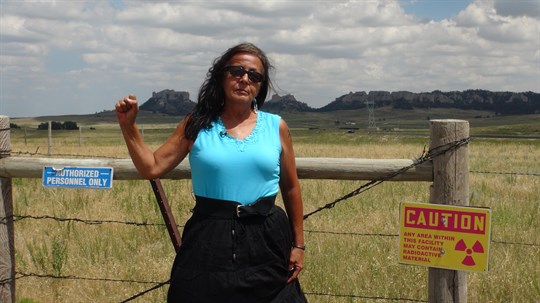 CRYING EARTH RISE UP, USA | 2014 | 57 min | Documentary. Director: Suree Towfighnia | Producer: Suree Towfighnia and Courtney Hermann. Original Language: English | www.cryingearthriseup.com.
CRYING EARTH RISE UP, USA | 2014 | 57 min | Documentary. Director: Suree Towfighnia | Producer: Suree Towfighnia and Courtney Hermann. Original Language: English | www.cryingearthriseup.com.
Crying Earth Rise Up tells the story of two Lakota women’s parallel search for answers to the question: Why are there high levels of radiation in our drinking water and how can we protect our families and community against this threat? The documentary is an intimate portrait of the human cost of uranium mining and its impact on sacred water. It tells a timely story of protecting land, water and a way of life.
18.00 Uhr - Nuclear Heritage in Italy
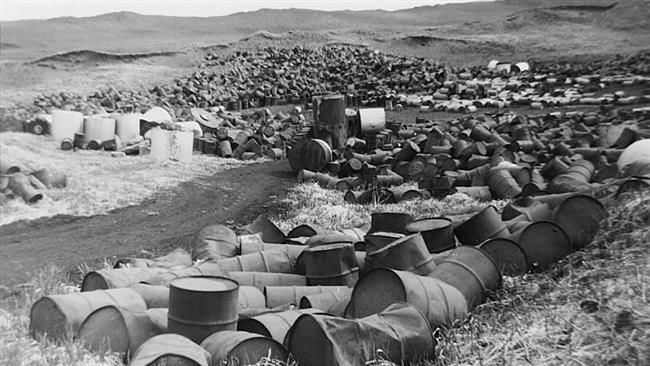 THE LAND OF FIRES, Italy | 2014 | 52 min , Documentary. Directors: Silvia Luzi and Luca Bellino | Producer: Press TV. Original Language: Italian | Subtitled Language English. http://www.presstv.ir/Detail/2015/01/15/393180/The-Land-of-fires
THE LAND OF FIRES, Italy | 2014 | 52 min , Documentary. Directors: Silvia Luzi and Luca Bellino | Producer: Press TV. Original Language: Italian | Subtitled Language English. http://www.presstv.ir/Detail/2015/01/15/393180/The-Land-of-fires
This documentary reveals the scandal of chemical and nuclear waste disposal in Italy, which involves organized crime and of course the Mafia. Natural beauty, fertile lands and good food, this the description of the southern regions of Italy, a piece of heaven on Earth which the Ancient Romans used to call “Campania felix” meaning happy Campania, because of the land’s extraordinary fertility which was capable of producing four harvests a year. But now that land is barren and is named: the land of fires. This horrific descent to hell has happened because for decades, parts of Campania have been used for illegal dumping, burning and disposal of toxic and radioactive waste under the management of the local mafia, the Camorra.the mafia received toxic waste from northern Italy and buried it or burned it in their private fiefdom. At its height, the business made at least €1.25 million a month. But this lucrative business has had disastrous effects on the environment and worse still on the public’s health. Trailer: http://www.filmsforaction.org/watch/the-land-of-fires/
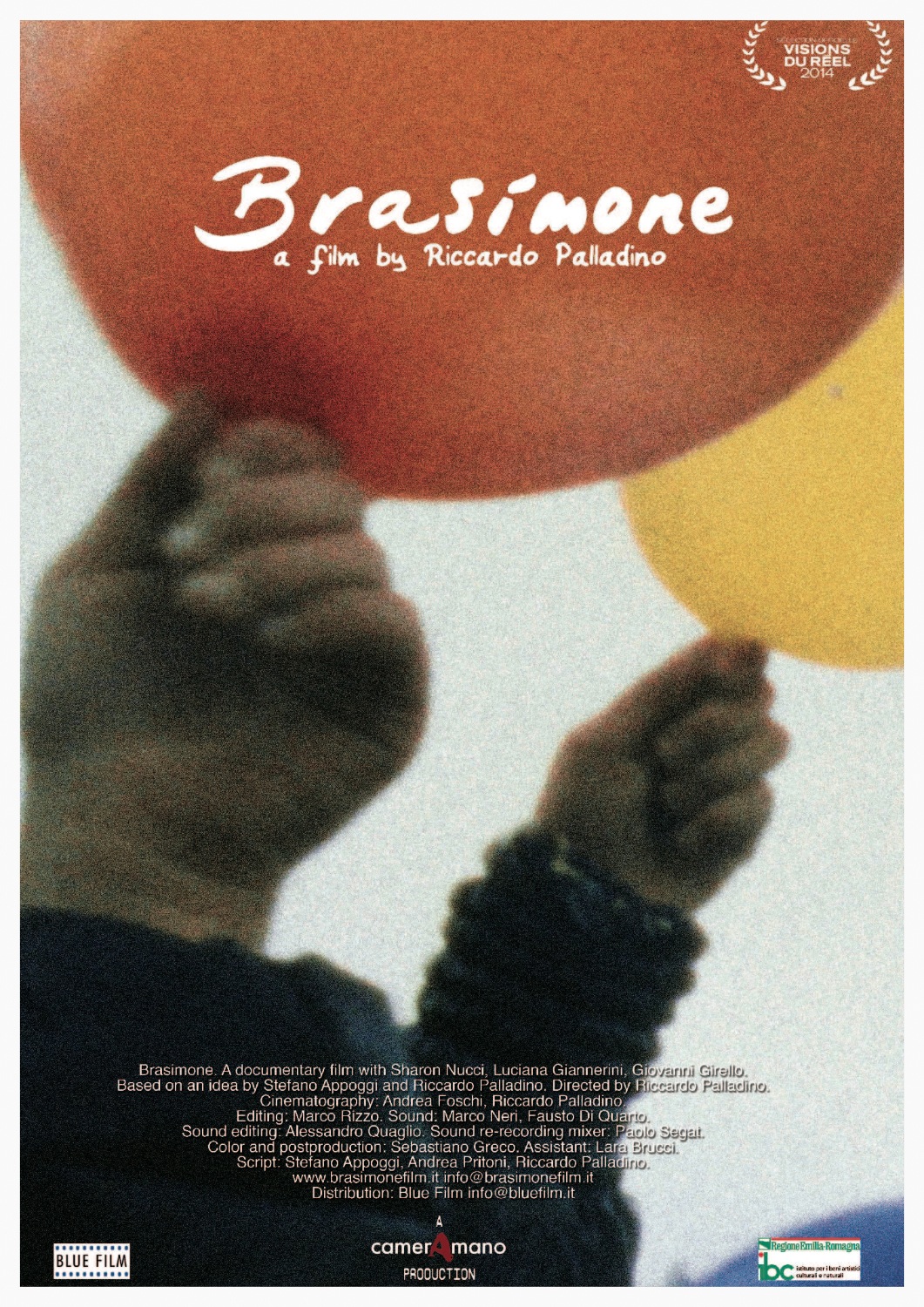
BRASIMONE, Italy | 2014 | 45’ | Documentary, Director: Riccardo Palladino | Producer: Riccardo Palladino. Original Language: Italian | Subtitled Language English / German, Film website: http://www.brasimonefilm.it/
Legend has it that every lake worth of that name must have its monster. Somebody consider the monster as a threat to keep off, someone else recognizes in ti an opportunity and starts to live with. Young Sharon lives there, around the beautiful Brasimone lake, in the Appennini mountains, near Bologna, where fascinating nature and futuristic industrialization coexist along an ambitious and unaware dream. Mountain life, seasons and recent Italian events cross each other, while onshore Brasimone lake they built a nuclear power plant, never working, yet...
Director's Statement: From the first moment I arrived at Brasimone Lake, I was so fascinated by the beautiful body of water as the huge concrete structure present on its banks. That image seemed to me dissonant and harmonious at the same time; the lines drawn by the mountains were their vanishing point in the nuclear power plant situated on the banks of the lake. In the 150 meters of the basin are enclosed emblematic events of Italian history. Brasimone has been a farmer place, then, with the construction of the dam, a small asset of early industrialization, later a tourist hub in the booming economy, a workers crossroads with the industry of the 70s and the Italian energy dream. The referendum on nuclear power in 1987 interrupted the curve of that trend. Brasimone, for me, besides being a beautiful corner of the Apennines, is a place where human action relates to the nature of the territory.
Awards: Premio nella Sezione Documentari – Visioni Fuori Raccordo Film Festival, 2014 / Nomination nella Sezione Global Vision – Dmz Korean Intern. Documentary Film Festival, 2014 / Nomination nella Sezione Le Perle – Vetrine Italia – MedFilm Festival, 2014 / Nomination nella Sezione Compétition Internationale Moyens Métrages – Visions du Reel, 2014
20.00 Uhr Nuclear Heritage in Italy
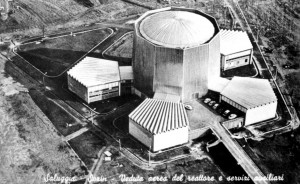 LÀ SUTA. LÀ NOSTRA EREDITÀ NUCLEARE IN UN TRIANGOLO D'ACQUA Là suta (Down there). Our nuclear legacy in a triangle of water, Italy | 2014 | 68’ | Documentary. Director: Daniele Gaglianone, Cristina Monti and Paolo Rapalino, Producer: Paola Ciafardoni. Original Language: Italian, Subtitled Language English and German, Info: http://www.lasuta.it
LÀ SUTA. LÀ NOSTRA EREDITÀ NUCLEARE IN UN TRIANGOLO D'ACQUA Là suta (Down there). Our nuclear legacy in a triangle of water, Italy | 2014 | 68’ | Documentary. Director: Daniele Gaglianone, Cristina Monti and Paolo Rapalino, Producer: Paola Ciafardoni. Original Language: Italian, Subtitled Language English and German, Info: http://www.lasuta.it
Saluggia, a small rural village 40 km from Turin, is where the majority of waste generated by Italian nuclear power stations is stored. In an area close to the banks of the river Dora Baltea, among the main tributaries of the Po, it is bordered by irrigation channels that carry water to the rice fields of Vercelli, and crossed by the aquifer that feeds the Monferrato aqueduct. This triangle of water, beginning in the 1950s, has seen the construction of a nuclear research centre, an experimental reactor and a reprocessing plant in which techniques have been developed, for both civil and military applications, for extracting uranium and plutonium from irradiated fuel elements. Spent fuel rods then arrived in Saluggia from Italian nuclear power stations and reactors from other countries in order to be melted and reprocessed in the Eurex plant. Still today liquid radioactive residues resulting from such treatment, the most dangerous of all nuclear waste, can be found there. In 2000 extreme flooding caused the Dora Baltea to overflow and the banks of the Farini canal to burst, inundating the nuclear sites with water. On that occasion, the Nobel Prize Winner for Physics Carlo Rubbia spoke of a “global disaster” being narrowly avoided. If any vats containing highly radioactive liquid waste had been dragged into the Po. While the creation of a single National Deposit where Italian radioactive waste can be safely and permanently stored continues to be put off, in Saluggia, on the same floodplain, a new temporary waste deposit called the D2 is currently under construction. Info: http://www.lasuta.it
Wednesday 30.09.2015
16.00 Uhr - Nuclear Accident and nuclear waste
THE PLAN (?) (Der Plan) USA | 2014 | 6'32” | Documentary, Director: Susan Rubin, Andrea Garbarini | Producer: Susan Rubin and Andrea Garbarini.Original Language: English with German subtitles. https://vimeo.com/96615872
Twenty million people live and work within 50 miles of New York's Indian Point nuclear power plant. The Plan (?) is a short film about the absurdity of the current evacuation plan for the aging Indian Point nuclear power plant. Awards: 2014 Nominated for Best Writing www.theshortfilmawards.com
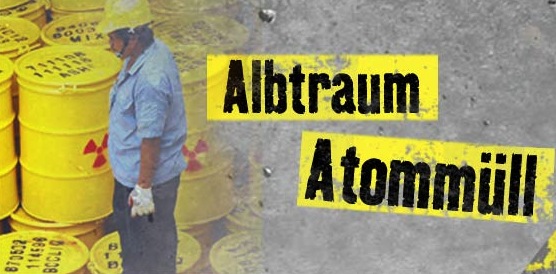 ALBTRAUM ATOMMÜLL, (Waste, The Nuclear Nightmare), France | 2009 | 98 min| Documentary, Director: Éric Guéret | Producer: Arte France and Bonne Pioche. Original Language: : French, German, English and Russian | Versions French and German | Subtitled Language English. www.arte.tv/de/dvd-albtraum-atommuell/2766902.htm
ALBTRAUM ATOMMÜLL, (Waste, The Nuclear Nightmare), France | 2009 | 98 min| Documentary, Director: Éric Guéret | Producer: Arte France and Bonne Pioche. Original Language: : French, German, English and Russian | Versions French and German | Subtitled Language English. www.arte.tv/de/dvd-albtraum-atommuell/2766902.htm
Looking at the cases of France, Germany, the United States and Russia, this scientific and political report explores the taboo subject of nuclear power, particularly the darkest aspects of the latter. Nuclear power is not without risks, its Achilles heel being nuclear waste. People are afraid of it, scientists cannot find an acceptable solution to the problem, industry companies are trying to reassure us and politicians avoid talking about it altogether. But what do we really know about nuclear waste? How can people have a clear vision of something that has always been shrouded in secrecy? In seeking the truth about waste, this film aims to provide, for the very first time, the keys to understanding the choices which weigh heavily on the future of humanity.
Awards: Rockie award (Investigative & Current Affairs Programs), BANFF TV Awards, 2010 / Etoile de la SCAM, Paris, 2010 - Hérisson d’argent, Festival International du Film Nature et Environnement, Grenoble, 2010
18.00 Uhr - Fukushima & Radioaktive Heritage in Europe
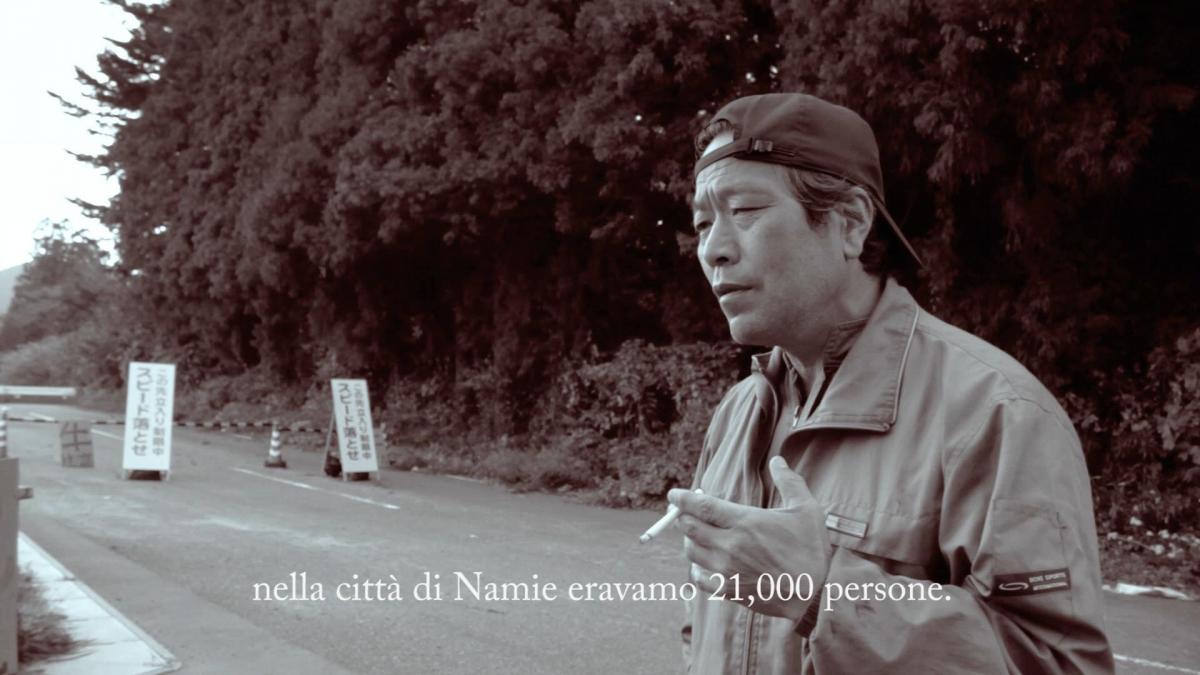 FUKUSHIMA NO DAIMYO, Italy, 2014, 20 min, Documentary, Director: Alessandro Tesei, Soundtrack: Giulio d’Agostino, Special contributions/ Photography: Pierpaolo Mittica, Japanese with German subtitles. http://www.alessandrotesei.com/#!fukushima-no-daimyo-ita/c106k
FUKUSHIMA NO DAIMYO, Italy, 2014, 20 min, Documentary, Director: Alessandro Tesei, Soundtrack: Giulio d’Agostino, Special contributions/ Photography: Pierpaolo Mittica, Japanese with German subtitles. http://www.alessandrotesei.com/#!fukushima-no-daimyo-ita/c106k
After almost two years after the accident at the Fukushima Nuclear Power Plant of March 11, 2011, Masami Yoshizawa, the cattle breeder who never left the evacuation zone, grant a unique interview where explains what has become his mission. The land is definitely lost, and pollution will never be deleted. Conscious of this, he remains in his farm and tries to let the world know about the tragic consequences of radiation exposure. At the same time, he raises a disturbing question: have you to flee and abandon your own contaminated land or you must accept the radioactivity, continuing to fight and live in your land? www.alessandrotesei.com
AWARDS: BEST SHORT MOVIE Bonsai Film Festival 2014 (Italy) / JURY AWARD Capodarco Film Festival 2014 (Italy) / BEST SHORT MOVIE Life after Oil Film Festival 2014 (Italy) / BEST DOCUMENTARY Fluvione Film Festival 2014 (Italy) / II PLACE Cielocorto FF 2014 (Italy)
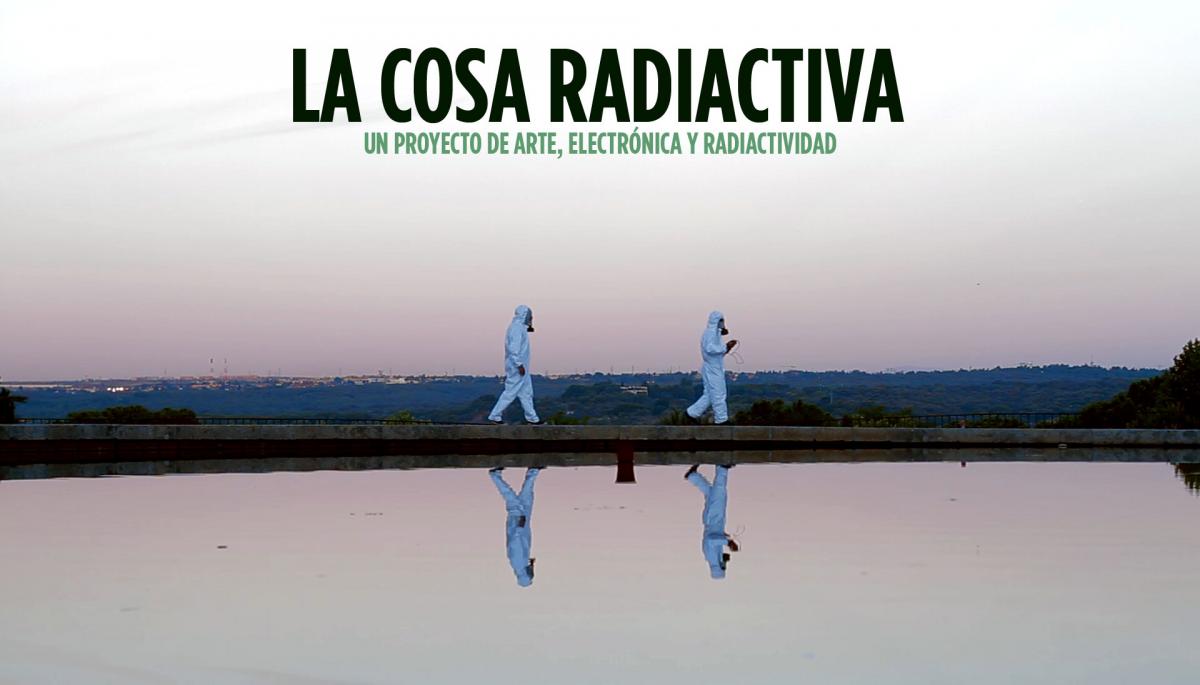 LA COSA RADIACTIVA (The Radioactive Thing), Spain, 30 min, 2013, Documentary, Directors: Sergio Galán and Alejandro Perez, Original Language: Spanish / Subtitled Languages: English and German. www.lacosaradiactiva.uncoded.es/index_en.html
LA COSA RADIACTIVA (The Radioactive Thing), Spain, 30 min, 2013, Documentary, Directors: Sergio Galán and Alejandro Perez, Original Language: Spanish / Subtitled Languages: English and German. www.lacosaradiactiva.uncoded.es/index_en.html
La Cosa Radiactiva is a road trip of engineers, musicians & artists in order to explore several sites related with radioactivity in Spain. We travel fully loaded with our free hardware equipment, designed to measure & visualize the natural radioactivity from earth, as well as the artificial one created by us humans. We organized debates and performances in places with some sort of connection with the history of the nuclear Industry in Spain. We played with the Do It Yourself Geiger counters and tried to bind a connection between. The movie is a compilation of several short pieces recorded during this trip, mainly intended for distribution on Internet. It combines visual expression, debate and scientific divulgation.
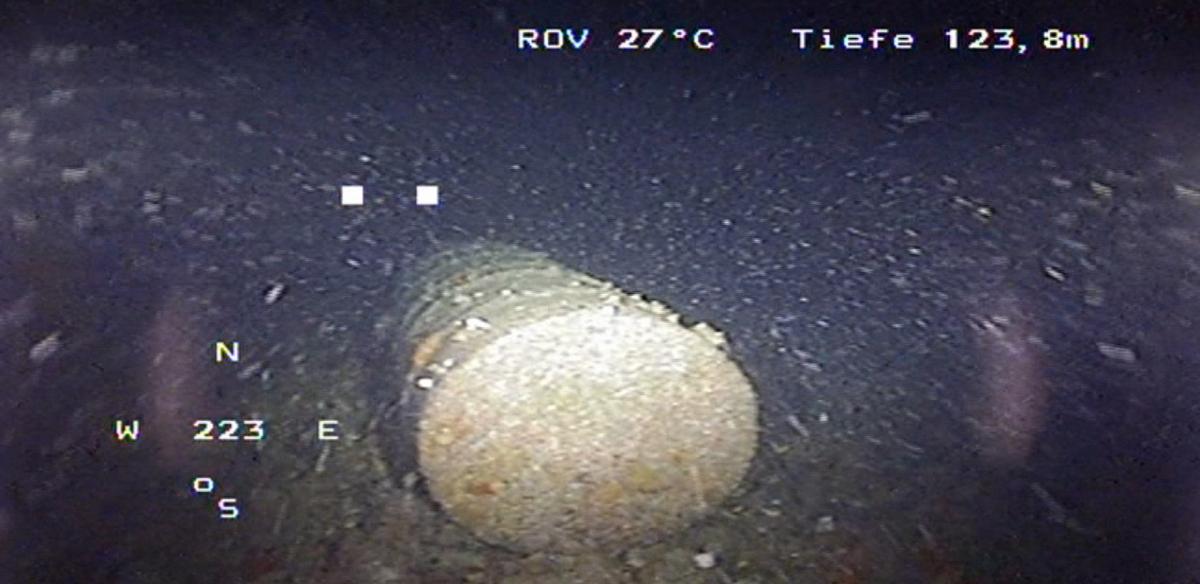 VERSENKT UND VERGESSEN - ATOMMÜLL VOR EUROPAS KÜSTEN (Radioactive waste Dumped and Forgotten), Germany, 2013, Documentary, 53 min, Direction: Thomas Reutter, Manfred Ladwig, Production: SWR, German. http://www.arte.tv/guide/de/046923-000/versenkt-und-vergessen
VERSENKT UND VERGESSEN - ATOMMÜLL VOR EUROPAS KÜSTEN (Radioactive waste Dumped and Forgotten), Germany, 2013, Documentary, 53 min, Direction: Thomas Reutter, Manfred Ladwig, Production: SWR, German. http://www.arte.tv/guide/de/046923-000/versenkt-und-vergessen
This documentary was shown on German and French TV but not in England. For obvious reasons the English don't want anyone to see it. The film discusses the effects of sea dumping of radioactive waste on the health of people living on the local coasts, like the Irish Sea and the Baltic Sea, which is the most radioactive sea in the world. The documentary focuses on the British sea dumping in the English Channel Hurd Deep about 12 miles north of the Channel Island of Alderney. Alderney is also subject to releases to the sea from the French Nuclear Reprocessing Plant at Cap de la La Hague 12 miles East of the small island. Film director Manfred Ladwig manages to get Dr John Cooper, head of the UK radiological protection organisation, the HPA, to admit that they balance childhood cancer cases against the advantages of cheaply disposing of nuclear waste.
20.00 Uhr - Nuclear accident and Chernobyl: Fiction
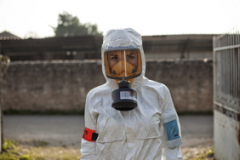 POUSSIERES (Dusts), France, 2013, 22 min, Fiction, Director: Daniel Metge, Production: Sandra Da Fonseca, Blue Monday Productions. For some time the village was just sentenced to silence and dust. Not a soul out there, not even a noise. However this evening, something is moving again. A few days after a nuclear accident in the Bugey power plant in France. Some evacuees return to their deserted village to get some luggage. Everyone is a bit overwhelmed by the situation, rescuers as well as refugees. www.daniel-metge.net and www.bluemonday.fr
POUSSIERES (Dusts), France, 2013, 22 min, Fiction, Director: Daniel Metge, Production: Sandra Da Fonseca, Blue Monday Productions. For some time the village was just sentenced to silence and dust. Not a soul out there, not even a noise. However this evening, something is moving again. A few days after a nuclear accident in the Bugey power plant in France. Some evacuees return to their deserted village to get some luggage. Everyone is a bit overwhelmed by the situation, rescuers as well as refugees. www.daniel-metge.net and www.bluemonday.fr
Best Short Film Award of the 3rd Bangalore Shorts Film Festival / Young Jura Award of the 13th Rhônalpin Film Festival of Saint-Bel.
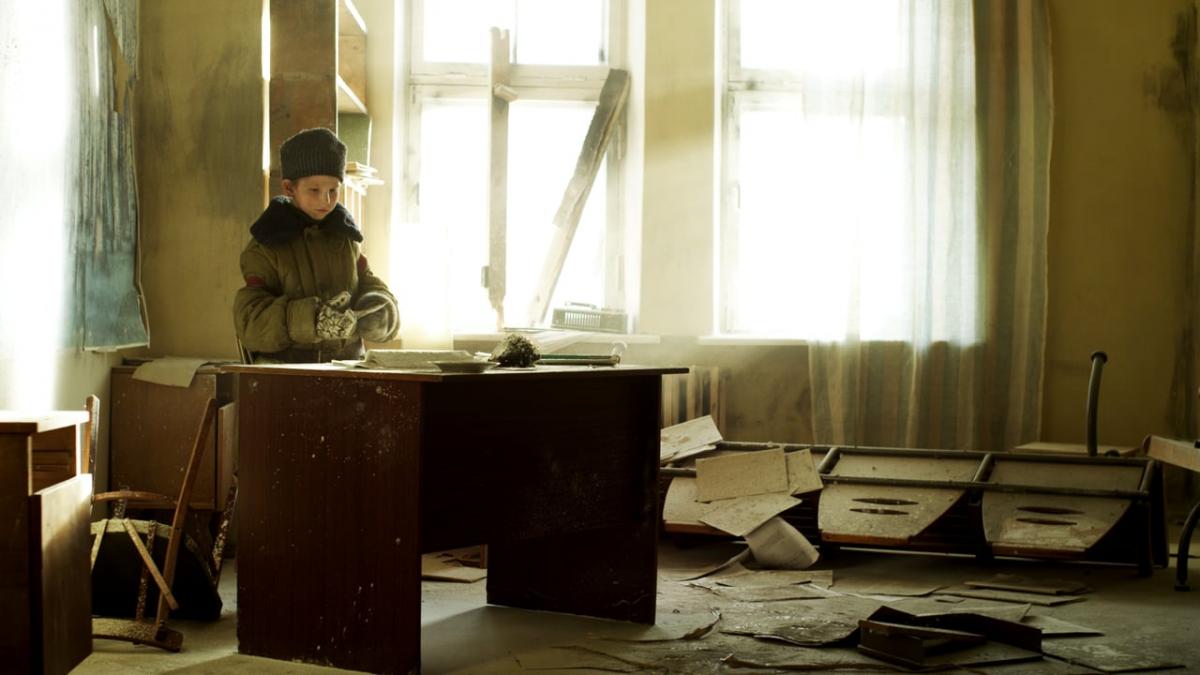 SEVEN YEARS OF WINTER (Sieben Jahre Winter), Germany / Denmark, 2011/12, 22 min, Fiction, Director: Marcus Schwenzel, Production: Hans Henrik Laier and Marcus Schwenzel. Russian and English/German subtitles. Trailer: www.vimeo.com/57438142
SEVEN YEARS OF WINTER (Sieben Jahre Winter), Germany / Denmark, 2011/12, 22 min, Fiction, Director: Marcus Schwenzel, Production: Hans Henrik Laier and Marcus Schwenzel. Russian and English/German subtitles. Trailer: www.vimeo.com/57438142
Seven-year-old Andrej scavenges the nuclear wasteland of Chernobyl for discarded documents to trade on the black market. Shot entirely on location, this is a haunting rumination on the heartbreaking effects of the political on the personal. Schwenzel’s film starts off as a straightforward narrative but once Andrej enters the radiated Chernobyl, the film soon turns into a location showcase of the desolate environment. Because the setting is so unforgettable and the cinematography is captured so excellently, we never have a problem with this change. Sasha Savenkov puts forth a fascinating one-man (or in this case, one-little boy) performance that will certainly have moviegoers looking out to see where his acting career goes from here. The technical feats trump the story, which the film is light on. Seven Years of Winter won several Awards like the Script Award of Excellence of the Los Angeles Film Festival 2010. Now the film receives a Yellow Oscar of the Uranium Film Festival.
Trailer: www.vimeo.com/57438142
Im Anschluß des Filmes erhält der Regisseur Marcus Schwenzel den Yellow Oscar des Internationalen Uranium Film Festivals 2015, Kategorie "Kurz-Spielfilm".
KINO BROTFABRIK Caligariplatz 1, 13086 Berlin
www.brotfabrik-berlin.de / Kartenreservierung Berlin
Telefon: 030 4714001/2 / karten@brotfabrik-berlin.de










